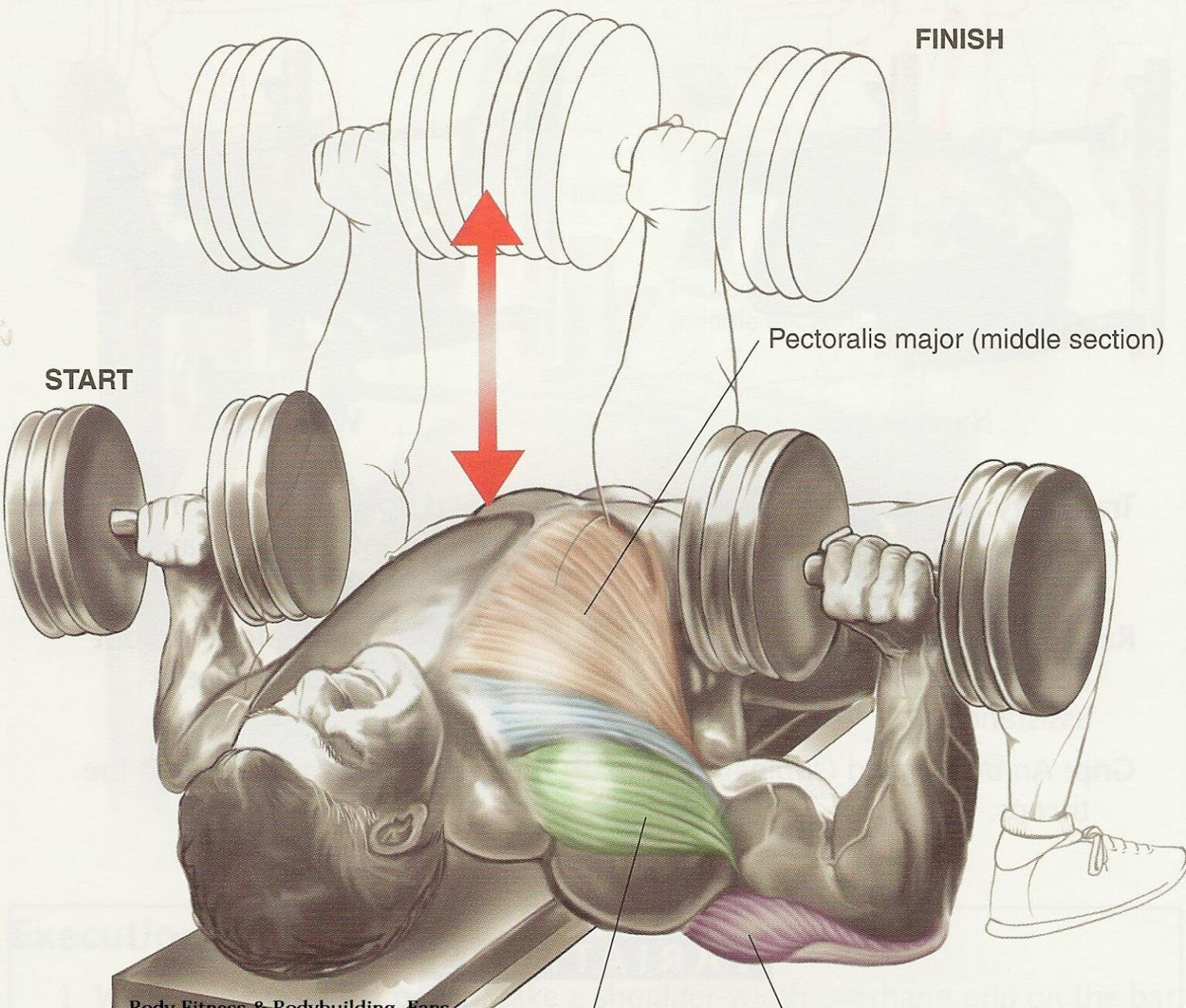While the chest is actually considered to be a single muscle group, it actually contains five separate yet equal areas which need to be developed to their fullest if you wish to display a full and complete chest.
Let’s check out these five areas, along with exercises which hit them most effectively.
The Inner Chest
Close-grip bench press (used for triceps) is a great way to isolate the inner chest. Also useful are incline and flat dumbbell flyes. The contraction and flexion you feel at the peak of every repetition is highly important as well.
The Outer Chest
Cable crossovers, wide incline dumbbell flyers, and parallel bar dips work to help develop that pectoral-shoulder tie-in area. Remember that this part of the upper chest shelf is visible in many poses, and its development is essential if you want to have an impressive upper body. Whenever you see a bodybuilder with poor pectoral/shoulder connections, there’ a good chance he’s not standing in the winner’s circle.
The Upper Chest
Incline “anything” will cause the upper chest to grow. Include a wide variety of incline bench pressing, dumbbell presses and flyes, and machine movements in your weekly training protocol. Always include two free weight exercises for every one machine movement you employ. Otherwise, you may find yourself missing out on some of the added benefits of free weight training, such as stabilizer muscle development.
The Lower Chest
Flat bench presses touch upon the lower chest, but nothing will stimulate this area like decline bench pressing and dumbbell presses. As always, the weight must remain heavy in order to be effective, and the repetitions should be focused and slow. You’ll also stimulate the lower chest (and abdominal tie-in lines) though the use of body weight parallel bar dips.
The Rib Cage
Frequently neglected in talks of overall chest development is the rib cage. In the 1970s, many bodybuilders believed that the use of dumbbell and barbell pullovers would lead to greater rib cage expansion, which would make the chest look bigger in side chest and vacuum poses. It’s hard to argue with the results of training in this manner for such proponents as Arnold Schwarzenegger and Frank Zane, but the jury is still out on whether or not this practice actually expands the bones of the rib cage. At any rate, and for adequate serratus development as well, include pullovers with free weights or the pullover machine in your weekly training regimen.
It is your goal to include movements from each of these main areas in each chest workout. Neglecting one of them from time to time won’t seriously impair your long-term gains, but it won’t help either. At the same time, long-term ignorance of one or more of these areas will lead to compromised overall chest development. It may look worse than it should, and it will certainly perform without complete structure and support required for safe exercising. Include at least one movement from each of these 5 areas in every chest workout, then add additional movements as you see fit, based upon your experience and own strengths and weaknesses in the gym.

